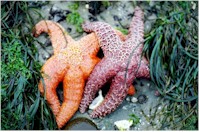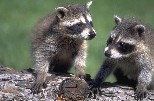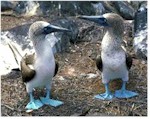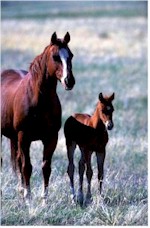|
Biodiversity |
Species Diversity |
Genetic Diversity |
Ecosystem Diversity |
Biodiversity Links |
|
GENETIC DIVERSITY
(variation) Within SPECIES
|
|
Most
species look very different from one another and we can
readily identify their species and tell them apart (i.e., animals, trees,
insects, birds, plants, fish, human beings).
They not only look different
from each other,
but they behave differently, have different needs, and they
contribute and interact in different ways to the world around them.
They can also impact (have a major effect on) other living
and non-living things (see our Human Impact on Oceans and
Non-Native Species pages regarding negative impact).
|
Genetic Diversity in Humans -
similarities and differences
Examples of
some genetic traits humans can inherit from their
parents and ancestors:
Look different from one another (but similar)
(long legs/short legs, red hair/black hair)
Function differently than each other (but similar)
(excellent eyesight, need to wear glasses)
Behave differently from one another (but similar)
(mostly silly/mostly serious, outgoing/shy)
Have different needs (but similar)
(prefer to be alone a lot, need to be with other people)
There are also genetic traits related to health that may
or may not be inherited along family lines in a species.
Humans contribute to the
world they live in, and impact the world in different ways;
but, these actions are more due to choice or
circumstance - and not genetic makeup.
Humans are all
basically very much like one another as opposed to being
like other species (i.e., we have 2 arms, 2 legs,
2 eyes, 10 toes, soft skin, we like to help each other, we
have the ability to
think about the future and analyze things - which a worm
or a clam or a tree can't, etc.) - and we all have
similar human needs (i.e., we like to learn new information and
develop new skills, we need love and each other).
Of course, humans need sustenance (food and
water), but so do other living species for the most
part.
Although humans are very similar to each
other, we each have specific genetic traits we have inherited from our parents
and ancestors (like height, facial appearance, and color of
hair, eyes, skin, and other genetic factors) that make us
unique as individuals. These genetic factors have
been passed along from generation to generation in
varying degrees.
|
|
These pictures show you just a few of the 2 million
known species in a very limited palette of colors.

Species
come in a wonderful array of colors -
and in incredible combinations of colors and patterns.
|

The
human species also comes in a variety of colors.
Look at these beautiful colors
and differences showing
Genetic Diversity within the human being species
 |
|
|
Other species
that are similar genetically within their species
can also come in different colors among their own species
and have individual specific traits they have
inherited from their parents and ancestors.
|

|

|

Click on image for info
and note (genetically inherited) "Behavior." |
 |
 |
 |
| |
Genetic
Diversity |
|
|
Genes, which are composed of DNA, are inside cells of living organisms.
They store and carry an accumulation of variations of
inherited biological information from parent to
offspring.
You can see some of the results of
genetic diversity on the outside (as you can see in the
pictures of the human being species and the photos
directly above).
Note you can see the difference in coloration on the faces of the
mother horse and her offspring. They are related
so the young horse inherited genes from the mother.
The young horse also inherited genes from the
father, plus ancestors on both sides. The young
horse will have its own genetic makeup (genetic
diversity), and hopefully
has inherited the strongest and best genes from both
parents.
The Blue-footed Boobies have inherited the
genes for blue feet from their ancestors and they have
inherited the genes for two feet; but the feet of one
Booby won't be exactly like the feet of the other Booby.
The two flowers are of the same species; but you can see they are different as far as the colors they
inherited (same thing with the starfish). And
inside each living organism are other inherited genetic
differences (i.e., possibly one starfish can move
quicker and is better at survival from predators;
possibly one tree will grow faster and taller, or be
able to withstand drought better than the other; possibly
the young horse will inherit speed capabilities and grow up to win horse races like its
grandfather before him).
Living organisms contain
a "history" of specific genes from their ancestry line,
which makes individual living organisms of the same
species different from one another in some genetic ways.
In fact, there are no exact duplicates of any (naturally
created) living
organism. One thing that all living organisms share in similarity is that
they can all reproduce. If an entire species could not
reproduce, it would become extinct.
Genetic diversity gives species the ability to adapt to
changing environments, including new pests and diseases
and new climatic conditions. |
|
|